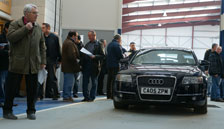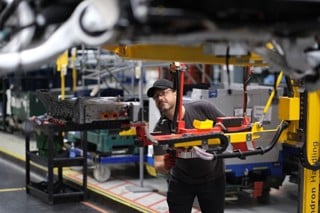Predicting what a new fleet car will be worth when it is de-fleeted is one of the most important and complicated tasks practiced in the industry.
Getting it wrong can wipe millions off balance sheets – as happened when used vehicle prices crashed in 2008.
And even if you lease your vehicles, you will still pay the price if your provider gets it wrong even though you are not carrying the risk.
Leasing companies who employ their own in-house experts to set, benchmark and review future forecasts, tread a fine line.
Being too cautious means vehicles become too expensive, while being too optimistic means being forced to increase lease costs mid-term or be hit with an RV loss at de-fleet.
But as Lee Hamlett, head of technical risk at Inchcape Fleet Solutions explains, setting the future values is “a blend of art and science”.
Because RVs cannot be set with exact precision, leasing companies are forced to review predictions as often as three times a year and, if their values are out, then their fleet customers can expect an increase or reduction in prices.
For example, the recent strong performance in the used vehicle market means the last two RV reviews by Inchcape Fleet Solutions have led to price reductions.
When a company – whether a lease or outright purchase fleet – begins to assess a new car, it follows a typical RV formula.
This means establishing what the new car would be worth now if it had come to the market three or four years ago.
“Initially we establish the true value of vehicles in the current market,” explains Hamlett.
“Trade guides such as CAP Black Book and Glass’s Guide are assessed for accuracy using historical
actual disposal experience from ourselves and the wider market.”
Then a wide variety of factors that could affect the supply and demand balance in the new and used vehicle markets are considered.
Typically this includes historical new car registrations, current economic forecasts incorporating the views of economists, banks, government policies, demographic changes, environmental factors, inflation forecasts, GDP projections, debt to income ratio, household wealth, business and consumer confidence and oil costs.
The effect of these factors is then calculated into the RV prediction.
“Furthermore, different lifecycle adjustments are decided by vehicle, class, manufacturer and fuel type,” adds Hamlett.
For example, the typical depreciation adjustment as a model progresses through its lifecycle is 3.5%.
When all of these factors are assessed and adjustments made, current values are established using lifecycle and any further adjustments agreed before future values are established.
“The relative position of this future value is then compared to current values to ensure the proposed depreciation is consistent with market expectations,” says Hamlett.
“Throughout the process we consider the future popularity of the model and its position relative to its closest competitors. Individual vehicles are also compared to ensure the hierarchy is consistent.”
Finally, the experts’ assessment is benchmarked against CAP Monitor and Glass’s Forecaster as well as against a number of industry residual value surveys.
And before setting an RV, which will then determine the monthly lease price of a car, sales teams are consulted to assess the competitiveness of pricing.
While RV setters look at what has happened in the past as an indicator of what may happen to future values, this cannot be relied upon.
“The future does not always replicate what has happened in the past,” warns Hamlett.
“But values always go through cycles – in 2008 the drop was more severe and savage than expected – but inevitably they will always recover…and they have.”






















Login to comment
Comments
No comments have been made yet.